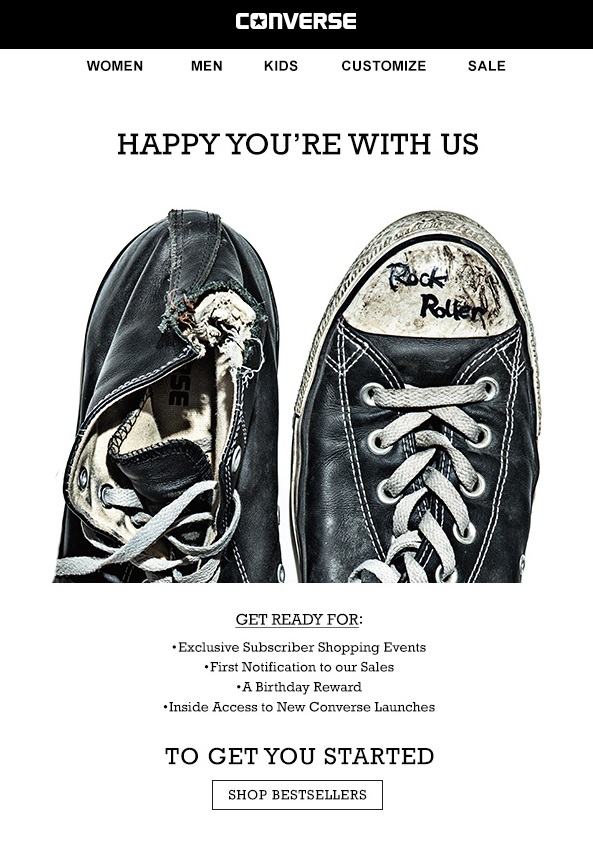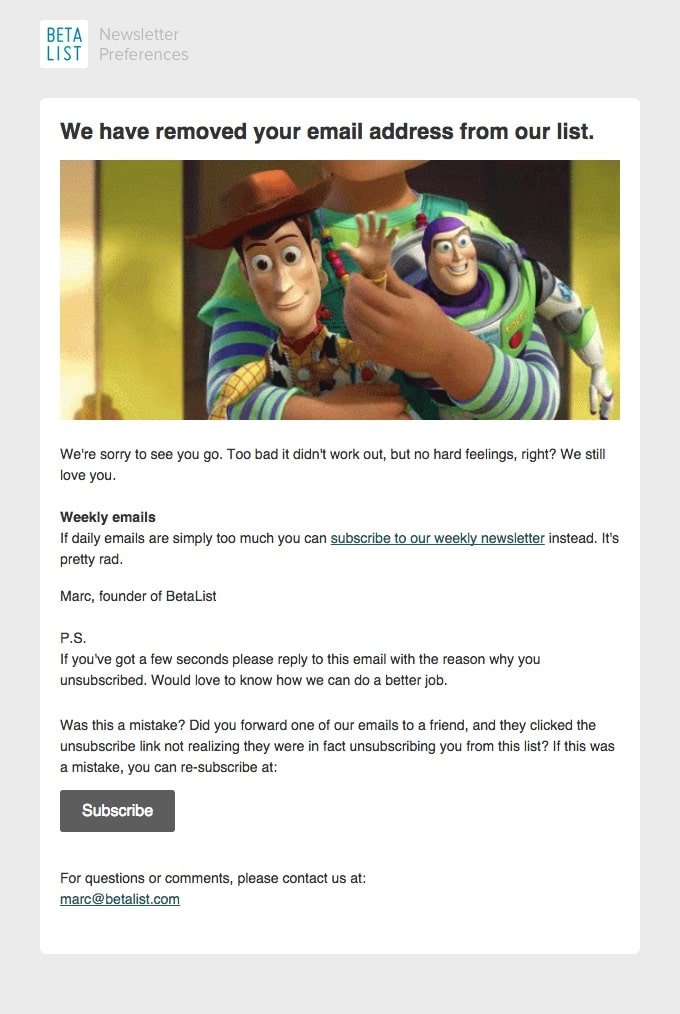There’s so much more to email marketing than setting up and sending attractive email campaigns to your list. Between the design, creation, testing, and monitoring, there are many moving parts that your team must consider. Monitoring key benchmarks is one way to track your campaign’s success.
While many marketers focus on open and click-through rates, there are other benchmarks you’ll want to watch, too, like subscriber churn and unsubscribe rates.
While your subscriber churn rate isn’t a typical email metric, this tricky rate could, eventually, end up costing your brand significantly.
What is a subscriber churn rate?
A subscriber churn rate is the percentage of new subscribers that cancel their subscriptions or do not renew during a given time period. As a marketer, you send out emails, update blogs, and keep the sales funnel full of potential new subscribers or clients.
Unfortunately, just because someone decides to join your email list or try your product doesn’t mean they’re interested for the long run.
On average, the typical churn rate for subscription services falls between 6-8%. When it comes to email subscriber churn rate, recent studies have shown that around half of an email list will churn within the first year.
What causes email list subscriber churn?
Email list subscriber churn happens more frequently than marketing teams like to admit. It stings when you’ve spent countless days, hours, and resources building your email list for some of them to unsubscribe.
When it comes to email list subscriber churn, there are two types:
- Those who choose to unsubscribe from your emails, effectively ending the relationship.
- Those who simply go inactive, choosing not to interact with your emails but remain on your list.
There are several reasons why your list may churn. If you aren’t maintaining the health of your email list, then you’ll begin to see your bottom line suffer.
So, before we dive into various email campaigns to help your marketing team minimize subscriber churn, let’s look at the steps necessary to maintain a healthy email list.
Maintaining a healthy email list
Email list hygiene is a vital part of any email marketing strategy. Every email list should be reviewed periodically so marketers can remove bounced email addresses, remove unengaged subscribers, and update any email addresses that may have changed.
These practices will help you uncover your disengaged subscribers. While there is little you can do about those who choose to unsubscribe, there is a chance to bring inactive subscribers back into the fold.
The first step is to define and identify your inactive subscribers. While some choose to define inactive subscribers as contacts who haven’t engaged with an email newsletter in six or more months, your own time frame will come down to the frequency with which you send emails.
If you send a weekly newsletter, then it would make sense to define inactivity based on six months. However, if you’re only sending out monthly or quarterly, you may need to stretch out that timeframe.
Once you’ve defined what inactivity means for your brand, you’ll want to get to the root of the problem. You can do this by finding out why your subscribers stopped engaging with your emails.
Walgreens does an excellent job of this. They implement an email preference section in each profile that allows subscribers to choose which emails they want to receive and if they choose to unsubscribe, they can tell you why.
Source: Walgreens
Source: Walgreens
How can email marketers minimize subscriber churn?
Once you’ve done the dirty work and found out why your subscribers disengage or unsubscribe from your email list, you can then begin to minimize subscriber churn by implementing various email campaigns.
Read on for real-world examples of email campaigns designed to minimize subscriber churn by re-engaging your inactive subscribers.
Re-engagement campaigns
Now, we mentioned that there was little you could do for those who choose to unsubscribe from your email list. Still, you can confirm their cancellation with them, just in case the unsubscribe was an accident.
Take this example from Beta List. They fully acknowledge the consumer’s request to be removed from their email subscriber list.
However, they offer a chance for these contacts to re-engage and re-subscribe, whether at a later date or right away.
They even give the user the option to subscribe to a different send preference.
Source: Really Good Emails
Re-engagement campaigns are ideal for inactive subscribers as well as the people who have already unsubscribed. Before completely removing them from your email subscriber list, it’s worth the effort to try and re-engage them since it costs more to acquire customers than to retain them.
Digiday does an excellent job of trying to re-engage their inactive subscribers with this “what you’ve been missing” campaign. Instead of hounding readers with reasons they should return to the platform, they created a newsletter-style campaign that gives inactive subscribers a little taste of what’s been happening in the time they’ve been away.
This is outstanding because it gives little snippets to entice the reader without giving away all the gold, meaning that subscribers will have to click links to learn more, and that involves engaging with the email.
Source: Really Good Emails
Incentives
Incentives are an excellent way to get inactive subscribers to reconsider engaging with a brand. Once you’ve identified subscribers who have gone cold, try offering them something worth coming back for.
In this example from Snap Kitchen, readers are enticed with benefits. The promise of benefits leaves readers wanting to know more as do the details addressed later in the email.
Promotions can come in any shape and can run for a given period of time. Your promotion may even take the form of a single-use coupon specifically designed for your re-engagement campaign.
Source: Really Good Emails
Other tips to reduce email subscriber churn
There are various reasons for subscriber churn, and one is that a lot of new subscribers can get lost in the constant shuffle of your funnels. Setting up an automated welcome email campaign can reduce email subscriber churn.
Welcome campaigns show new subscribers you’re happy to have them on your list. This promotes engagement by providing information to new subscribers, such as what they can expect from your newsletter or even incentives for joining.
In the case of this Converse welcome campaign, new subscribers aren’t just welcomed. They also receive a preview of benefits and top-selling products.

Source: Campaign Monitor
Another way to minimize subscriber churn is to make use of double opt-ins. This ensures that the subscriber genuinely wants to be on your list. It also helps verify that they aren’t accidentally subscribing to something they don’t want to be involved with.
Finally, make sure you create and send relevant content to your list. If you aren’t, then subscribers will quickly lose interest in what you send, leading to inactivity or unsubscribes.
Wrap up
Some level of subscriber churn is inevitable. However, marketing teams can take action to combat that churn and bring once-invested subscribers back into the fray.
Some examples of email campaigns to use include:
- Incentives
- re-engagement campaigns
- Win back campaigns
Want to learn more about subscriber churn and how to minimize it? Then check out our guide to help reduce churn with email campaigns. Not sure if your metrics are meeting industry standards? Our benchmarks guide can help.










